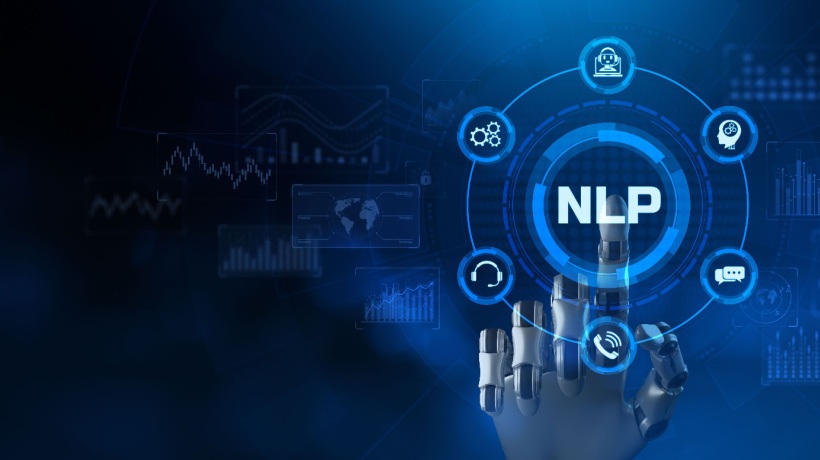Discussing Generative AI And Natural Language Processing
Computers have evolved and can learn through visual observations or interact with users without sounding robotic. Some technologies necessary for these developments include Artificial Intelligence (AI) and Large Language Models (LLMs). This article explores their latest use cases concerning generative AI and Natural Language Processing.
What Is Generative AI?
Generative Artificial Intelligence, or GenAI, can create audiovisual media and extensive text output responding to submitted user prompts. Its capabilities have surprised many, attracting stakeholders from all disciplines and regions. Therefore, many professionals want to explore and utilize generative AI solutions, from academics to business leaders.
Generative AI, short for Generative Artificial Intelligence, refers to a class of Artificial Intelligence algorithms and models designed to generate new, original data that resembles human-created data. Unlike traditional AI systems that rely on pre-programmed rules or patterns to perform tasks, generative AI models learn from vast amounts of existing data and use this knowledge to create new, previously unseen content. These models are often based on Deep Learning techniques, such as recurrent neural networks (RNNs) and transformers, which allow them to capture complex patterns and relationships within the data. Generative AI can be applied to various types of data, including images, videos, music, and most prominently, text.
In the context of Natural Language Processing (NLP), generative AI models can understand and generate human-like text. One of the key advancements in this area is the development of transformer-based architectures like OpenAI's GPT (Generative Pre-trained Transformer) series. These models are pre-trained on massive corpora of text data, enabling them to generate coherent and contextually relevant text passages, answer questions, create poetry, translate languages, and perform many other language-related tasks.
Generative AI has a wide range of applications, including content creation, chatbots, virtual assistants, language translation, and creative arts. It has significantly advanced the field of AI, allowing machines to exhibit a level of creativity and language understanding that was previously thought to be exclusive to humans.
What Is Natural Language Processing (NLP)?
Natural Language Processing facilitates identifying meaning, intention, and emotion in textual content. It leverages computational linguistics that conceptualizes human languages through rules and algorithms. NLP can revolutionize user interactions with digital interfaces by automating two-way communication techniques. Reputed Natural Language Processing (NLP) services also deliver fast translations, enabling brands to overcome language barriers in global business expansion. For example, these technologies range from sentiment analytics to multilingual feedback evaluation. These tasks are vital for marketing effectiveness and personalizing consumer support.
The Role Of Generative AI And Natural Language Processing
1. Industrial Virtual Assistants
Doctors can get a virtual chatbot to help them organize patients’ clinical records. Likewise, engineers, lawyers, bankers, marketers, and many other professionals can benefit from a generative AI co-worker. However, the reliability of generative AI often results from qualitative training data. So, NLP tools can help "understand" and cleanse datasets to train GenAI chatbots. Later, chatbots can share automated prompts with NLP systems to analyze, translate, categorize, and publish them online for universal reach.
2. Multilingual Media Publication
When a published book requires translations, the publisher hires experienced translators. However, they must thoroughly review the book and find the best way to convey authors’ insights in another language. This activity can also include explaining region-specific cultural and spoken traditions to a foreign audience without disturbing their immersion. Similar challenges affect movie producers, singers, voice actors, and news platforms. Thankfully, GenAI and NLP can help them reduce time spent on localizing content in various languages.
3. Personalized Experiences
While humans are good at guessing others’ emotions, computers lack this ability. So, most chatbots follow pre-configured speech patterns to consumers visiting a company’s website or eCommerce portal. They sound robotic, lack empathy for customers’ discomfort, and respond with formulaic chat bubbles. However, corporations can personalize every conversation and improve Customer Experience if they integrate generative AI with these chatbots.
4. Accelerated Data Operations
Big Data has handled unstructured data objects using advanced analytics. Still, analysts must supervise the extract-load-transform (ETL) pipelines to protect data integrity and prevent bias in resulting insights. They tackle several data quality management issues like missing values and statistical anomalies. NLP technologies will help them replace poor-quality user inputs with better alternatives. So, analysts can update empty and inconsistent database records quickly.
Conclusion
Generative AI has a crucial role in enhancing Natural Language Processing models by offering complex prompts akin to creative human feedback. At the same time, GenAI requires NLP-based data quality assurance to combat malicious user prompts and reduce controversial content generation. Both technologies utilize abstract mathematics, linguistics, named-entity recognition (NER), Deep Learning, and statistical models. While the former employs them to create what users request, the latter focuses on understanding the meaning of input material. Most stakeholders will need the knowledge of GenAI and NLP to excel in navigating this hyper-digital century.

